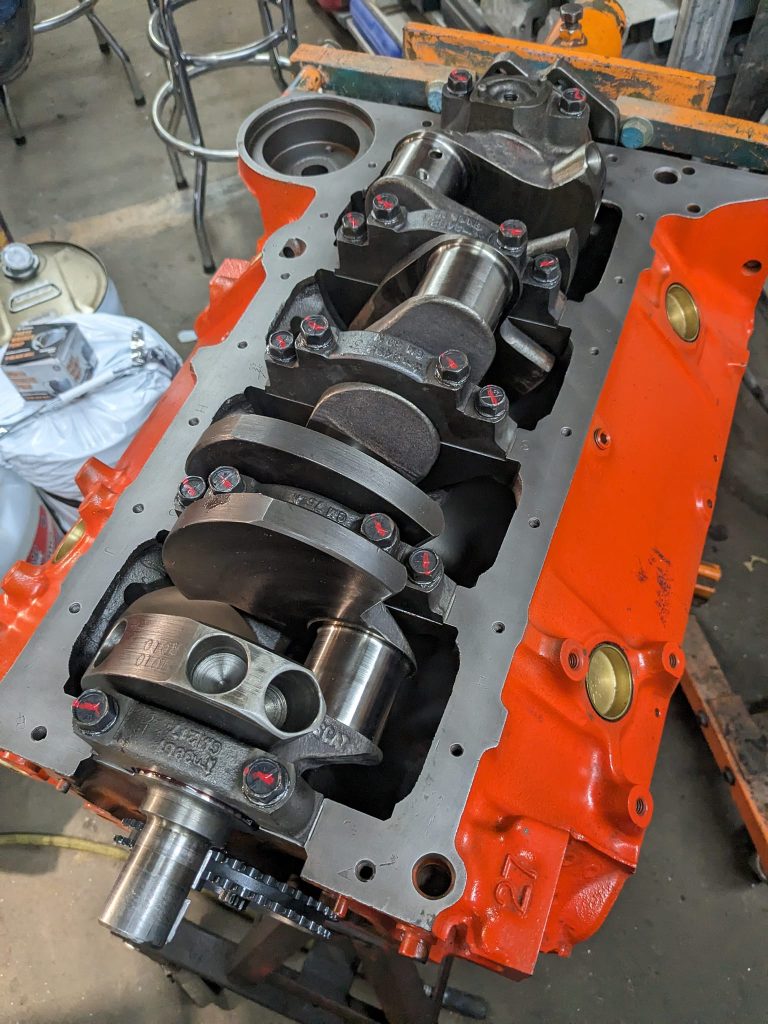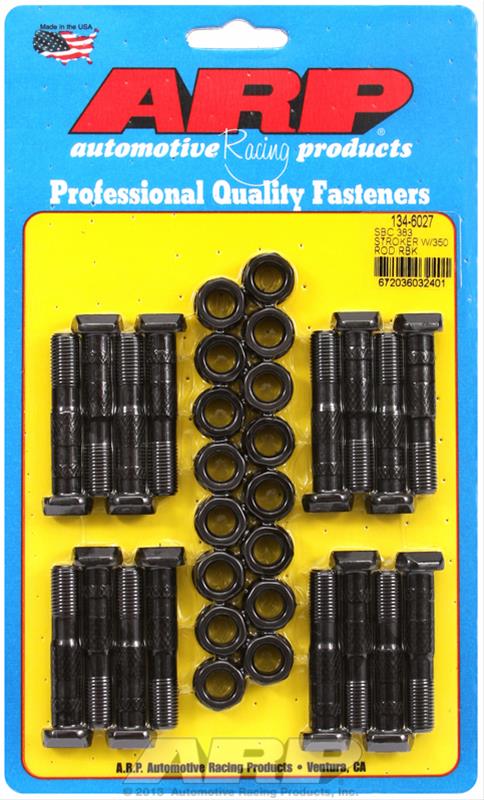I’ve run into some clearance issues on my engine build. I have a 383ci small block Chevy with a 3.75 inch stroke crank and stock rods. I put the cam in and crank in everything is good. Then I go to put in the #1 piston. After I torqued it down I spin it around to check everything is still smooth and I have clearance issues where the connecting rod hits the cam lobe. It’s so bad that the crank just stops. The cam I have in (that I obviously can’t run now) is a Lunati Bootlegger PN 12224. It’s advertised as 0.485 inch lift.
I’m wondering if this is a common problem and if there is a solution like a smaller cam. I still want a good rpm range and a lopey idle. Stall and compression won’t be an issue as I have a manual transmission and the compression should be around 10.8:1. I’ve looked at the Summit Racing camshaft (part number SUM-1785) and it looks to fit the build at only 0.450 inch lift. Any help or advice here is welcomed.
A.B.
The first issue right out of the gate is that your photo shows that the cam is in with a gear but you do not have the crank timing chain gear or the chain installed. So the cam is not in the correct orientation with the crankshaft.
When building a 3.75 inch stroke (or longer) small block, this additional stroke moves the big end of the connecting rod very close to the camshaft with the piston near the top of its stroke. This is especially true when using stock connecting rods and stock rod bolts, which we will assume you are using.
The first thing to do is to install your crank gear and timing chain with the dots aligned between the two gears. This will probably solve the problem with Number One connecting rod, but may only delay the next problem.
Most small blocks are very tight with the rod and cam on cylinders Number 1, 2, 5, and 6.

Double check this but the rod that usually hits is #2 and/or #7. If this occurs, it might be possible to improve this situation by retarding the camshaft to see if this will create sufficient clearance. Any clearance will be enough—even 0.010 inch will work, but more is always better.
If that trick does not work, you could go with a camshaft with smaller base circle or you could use a different ARP stroker rod bolt with a trimmed rod bolt head offset to help clear the cam. This might affect balancing (assuming the rotating system was originally balanced—which you should always do), as the new ARP bolt will likely be not weigh the same as the original rod bolt.
You may be tempted to merely grind on the stock rod bolt head to achieve this same clearance. This is a dangerous game to play since any grinding on the head of the bolt will likely result in a bolt that will fail. So spend the money on the ARP rod bolts which are already stronger than stock rod bolts made of 8740 chromoly steel..

These steps will also require degreeing the camshaft to check for clearance and may need a different timing set to allow you to change the timing more easily. Best bet is with moving the crank gear usually two degrees but sometimes four degrees.
Check for Clearance at the Bottom End Too
Do you have clearance at the block? Often the rod bolts on aftermarket rods will hit the area underneath the oil pan rail—so that needs to be checked as well to ensure you don’t have interference. If so, this work is best left to a machine shop to do correctly. This can be done with a deft hand and a high-speed die grinder. Shoot for minimal clearance here of 0.020 inch is all that is necessary. This clearance will not change regardless of rpm.
The best approach (which admittedly may be too late for you) is to use aftermarket stroker connecting rods that drastically improve clearance to clear the cam.

More awesome advice from Jeff! Thanks for helping us all!